
Astronomy for beginners: A complete guide for UK stargazing
Want to spot The North Star, Mars, The International Space Station and other galaxies with your naked eye? Read on to find the top stargazing basics – no telescope required.
You don’t need lots of expensive equipment to see incredible things in the night sky. With just a bit of guidance, you’ll soon be able to spot planets, stars, meteors, nebulae and even another galaxy.
Throughout 2022, there will be plenty of opportunities to witness some wonderful cosmic sights, like the Andromeda Galaxy, located some 2.5 million light-years away.
Here’s what you need to know to get started.
When is the best time of the month to stargaze?
This depends on what you are looking for. If you want to study the Moon using binoculars, the best time to look is a few days before or after the full Moon, when the glare will not be as intense.
But if you’re looking for fainter objects, it’s best to look when the Moon is as small as possible, so around the new Moon or when the Moon has set for the night (just before dawn).
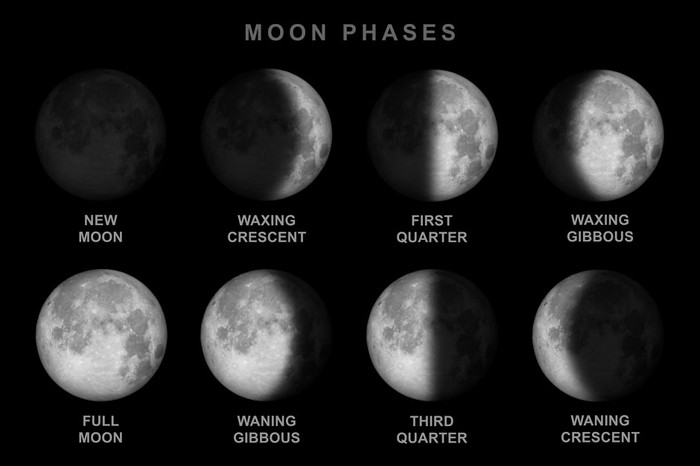
If you’re struggling to see something, try looking away slightly and it might appear in the corner of your eye. This is called ‘averted vision’, and it works because the centre of your eye is less sensitive than the bits around it.
When is the next full Moon?
In 2022, you can expect 12 full Moons. A full Moon happens roughly every 29.5 days, the length of one lunar cycle.
Check out our complete Full Moon UK guide for more info.
Do I need to be outside to stargaze?
Not necessarily. There are plenty of beautiful views of otherworldly objects that you can see from the comfort of your house or car. The key is making sure you reduce the light around you as much as possible.
If you want to stargaze from home, go to the highest window you have and turn off all the lights in your house.
Wherever you are stargazing, it’s important to give your eyes time to grow accustomed to the dark. After 15 minutes your eyes start to adjust and you’ll see much more, but it takes about 40 minutes to fully adjust to the dark. Avoid using a torch or looking at your bright phone screen.
Read more about astronomy:
Do I need to buy a telescope or a pair of stargazing binoculars?
There is no need to splash out on expensive equipment, especially when you’re first getting into stargazing. There is so much you can see with the naked eye – planets, stars, satellites, meteor showers and the Moon.
More like this
If you want to take your stargazing a little further, start with a pair of binoculars. The important thing with binoculars is magnification – binoculars with 10x magnification will let you see the craters on the Moon, the Galilean moons of Jupiter, and comets (when they’re visible).
A small telescope, with 25x or 50x magnification, will let you see the rings around Saturn. Remember, the best telescope is the one you will use, so don’t spend lots of money on something you won’t bother getting out the box.
How can I take better pictures of the night sky?
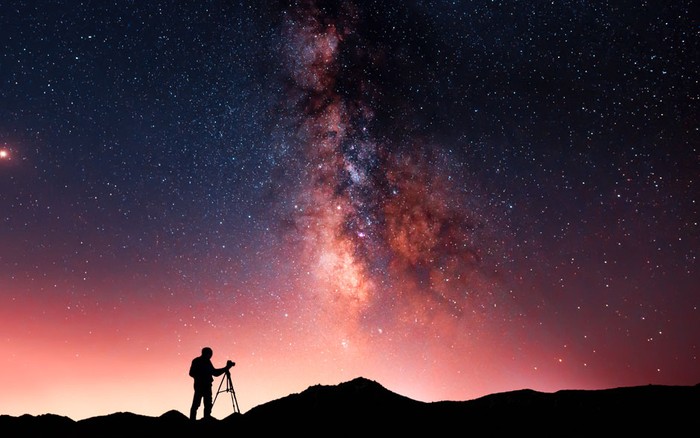
If you want to take photos of the sky using your smartphone, there are a few things you can do to improve their quality. Turn off the flash and don’t use digital zoom. If you’re using a digital camera, start with an ISO of around 100 and increase it to see what the noise or distortion is like.
The longer the shutter is open the more light you will let in, but if you leave the shutter open for more than 20 seconds the stars will blur – remember we are on a spinning rock! If you want to capture star trails, then you can go for a much slower shutter speed.
But if you’re looking to photograph deep-sky objects, you will need a motorised mount that moves your camera to compensate for the rotation of the Earth.
How can I see a meteor shower?
If you’re stargazing for about an hour, you will probably see a couple of meteors. But meteor showers only happen at certain times of the year, because they depend on where Earth is in its orbit around the Sun. Usually, meteor showers are best seen between midnight and sunrise.
To find out more, see our beginner's guide to meteor showers.
What is the difference between a meteor, an asteroid and a comet?
A meteor is a flash of light caused by bits of dust or rock entering Earth’s atmosphere and burning up. Meteors are usually caused by debris that has broken off an asteroid or a comet.
An asteroid is a lump of rock originating in the asteroid belt between Mars and Jupiter.
Comets are much further from Earth. They contain lots of ices that heat up when they come near the Sun, creating a large tail.
Read more:
What are the best astronomy apps to download?
Looking to avoid light pollution or improve your nighttime photography? There's an app for that. More than one, actually: hundreds of astronomy apps are available for Android and Apple devices. These include augmented reality software SkyView (capable of detecting stars with your camera), and low light image wizard NightCap.
Which others are worthy of your home screen? Check out our guide to the best astronomy apps.
How can I see Mars at night?
Occasionally appearing as one of the brightest planets, Mars shines with a distinctive reddish hue. As with all planets, Mars is on its own orbit of the Sun, so its position in the sky changes. By using any stargazing app, you’ll be able to plan when to see Mars.
How can I spot Jupiter at night?
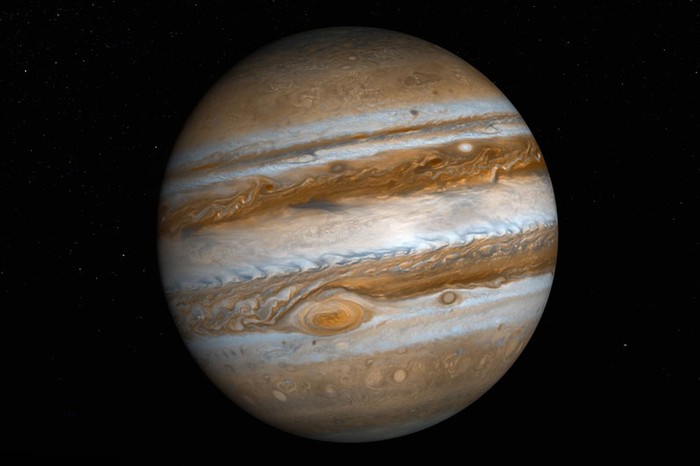
Far across the Solar System, Jupiter shines brightly in the sky because of its sheer size. When visible, it is one of the brightest objects in the night sky. Throughout January it will set and rise with the Sun, meaning we won’t be able to see it.
From around April, Jupiter starts to rise before the Sun. If you look through binoculars, you’ll be able to see four of Jupiter’s moons, and it's easiest to view Jupiter in the Summer months and when Jupiter reaches opposition.
How can I see Saturn at night?
Smaller and further away than Jupiter, Saturn is not as bright as its gas giant neighbour, but can still be seen from light-polluted cities.
Like Jupiter, however, it won’t be visible until mid-April when it starts to rise before the Sun, at around 4am. If you have a small telescope, you’ll be able to see Saturn’s rings and some of its moons.
How can I see The International Space Station at night?
The ISS is the brightest satellite, making it easy to spot in the night sky. When it’s visible, it looks like a solid white light moving quite quickly across the sky, usually crossing in a couple of minutes. It tends to be noticeable just before sunrise or just after sunset.
The best way to find it is to sign up to NASA’s Spot the Station service, which will tell you exactly when it’ll be visible in your area.
For a full explainer, see our complete guide, How to spot The International Space Station at night.
How can I see Ursa Major?

The constellation of Ursa Major is visible from most parts of the northern hemisphere all night, all year round. It’s easy to spot using the asterism known as the Plough in the UK.
Always near the general direction of north, the Plough is recognisable by the three stars in its ‘handle’, and four in its ‘bowl’. From this asterism you can find lots of different things in the sky.
How do I spot Arcturus?

From the Plough, a really simple star hop, and an easy one to remember, is following the arc of the handle to the star Arcturus. Draw an imaginary line from the star closest to the bowl, through the others in the handle, and keep going until you see a bright star.
Arcturus is a bright star in the constellation Boötes, and is the fourth-brightest star in the night sky.
How can I find Orion in the night sky?
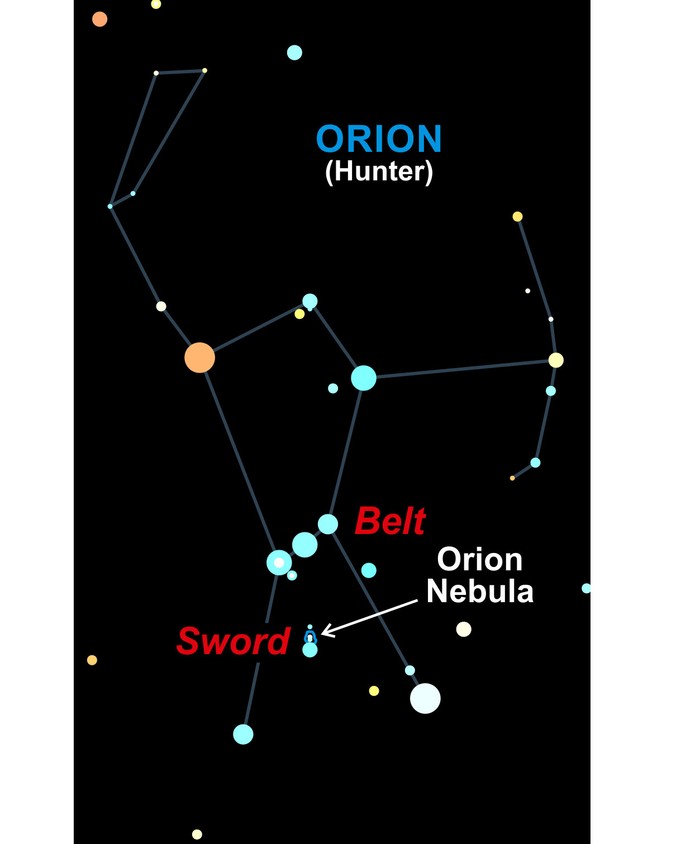
Another easily recognisable constellation is Orion, which you can find using the three stars that make up Orion’s Belt.
Orion is a winter constellation in the northern hemisphere. Orion will be visible as soon as the Sun sets, the constellation will then dip below the horizon in the early hours of the morning.
If you look slightly below Orion’s Belt, you’ll see a fuzzy patch which is the Orion Nebula. Through binoculars or a telescope this looks incredible.
How can I see The Pleiades?
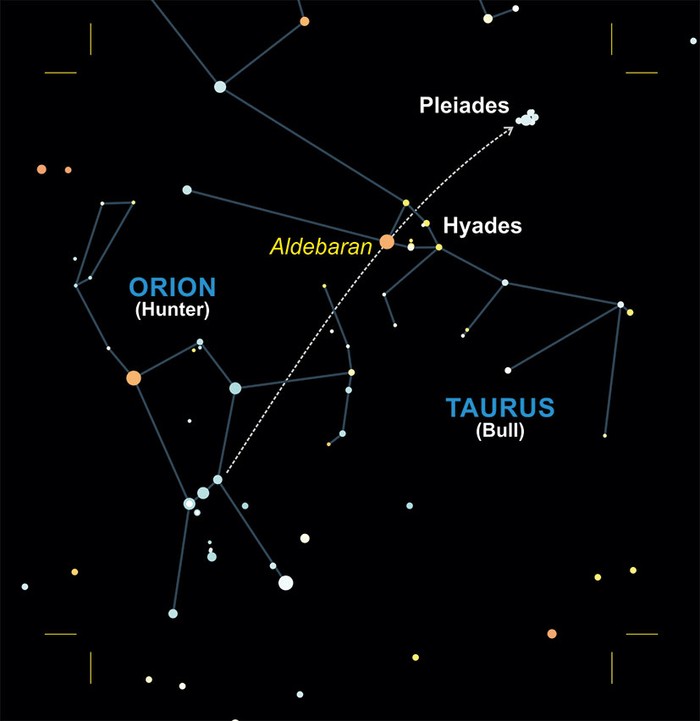
The Pleiades, or Seven Sisters, is a cluster of stars in the constellation Taurus. Look for Orion’s Belt, then follow the stars from left to right. Keep that line going, and you’ll get to a bright star called Aldebaran, the brightest in Taurus.
Go a little further, and you will see a small cluster of stars that almost looks like a tiny version of the Plough. That is the Seven Sisters.
How can I find The North Star?

Polaris, or the North Star, is always visible in the northern hemisphere, and unlike all other stars, it doesn’t move.
You can use the Plough to find the North Star. If you imagine the Plough is like a pan with a handle, with its base at the bottom, find the two stars furthest from the handle, these are called Merak and Dubhe. Draw a line from bottom to top, keep that going and you’ll get to Polaris.
If you're looking for more information, check out our full guide how to find the North Star.
How can I see Sirius?
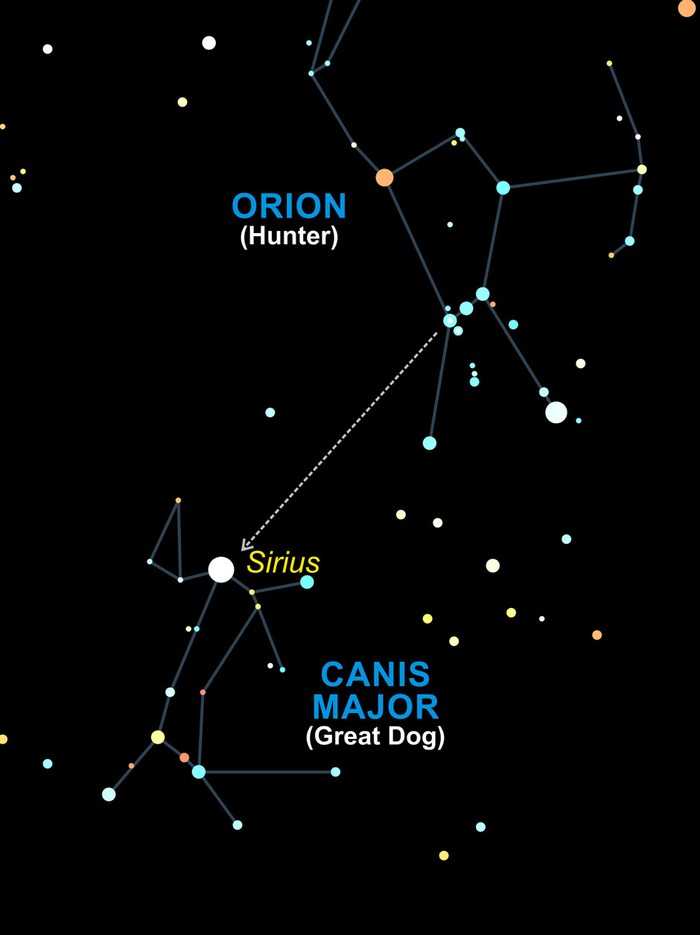
Sirius, or the Dog Star, is the brightest star in the night sky. It’s bright because it’s close – only 8.6 light-years away – and it’s actually a binary star (two stars orbiting each other). To find Sirius, you can use Orion.
The three stars in Orion’s Belt act as a pointer to Sirius. In the northern hemisphere, follow the stars from right to left, then keep that line going until you find the brightest star.
How can I spot Cassiopeia?
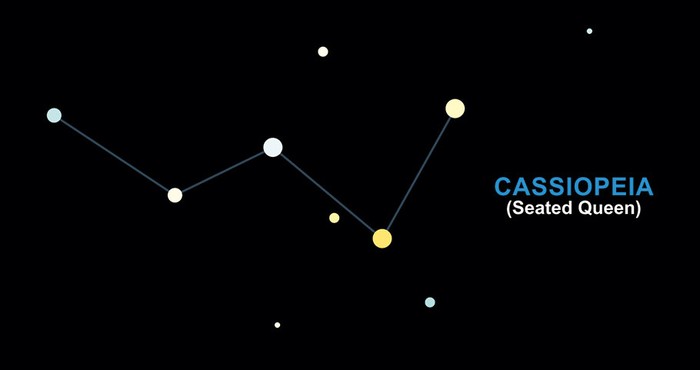
Another constellation visible from most of the northern hemisphere all year round is Cassiopeia. This is a small constellation that circles the North Star, making a W or M shape depending on the time of night.
If you found Polaris using the Plough, follow that line again and keep it going until you see the recognisable form of Cassiopeia.
How can I see the Andromeda Galaxy at night?
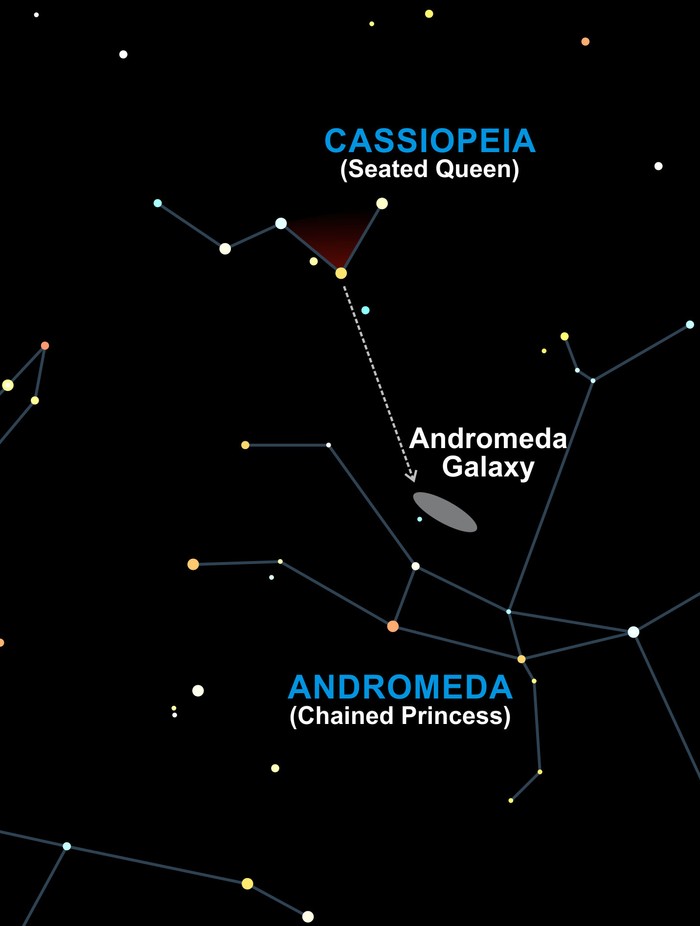
From Cassiopeia, you can hop to one of the most distant things you will ever see with your eyes. The Andromeda Galaxy, also known as M31, is a spiral galaxy 2.5 million light-years away, and you can see it with the naked eye. Using Cassiopeia, find the deepest of its two V-shapes.
This acts as an arrow pointing you to Andromeda, which will look like a fuzzy patch in the sky (appearing slightly clearer through binoculars or a telescope).
If you're looking for more pointers, check out our full guide to The Andromeda Galaxy.
Read more:
Authors
Sponsored Deals

May Half Price Sale
- Save up to 52% when you subscribe to BBC Science Focus Magazine.
- Risk - free offer! Cancel at any time when you subscribe via Direct Debit.
- FREE UK delivery.
- Stay up to date with the latest developments in the worlds of science and technology.





